HOUSE ON HAUNTED HILL (1959)
A millionaire offers $10,000 to five people who agree to be locked in a large, spooky, rented house overnight with him and his wife.
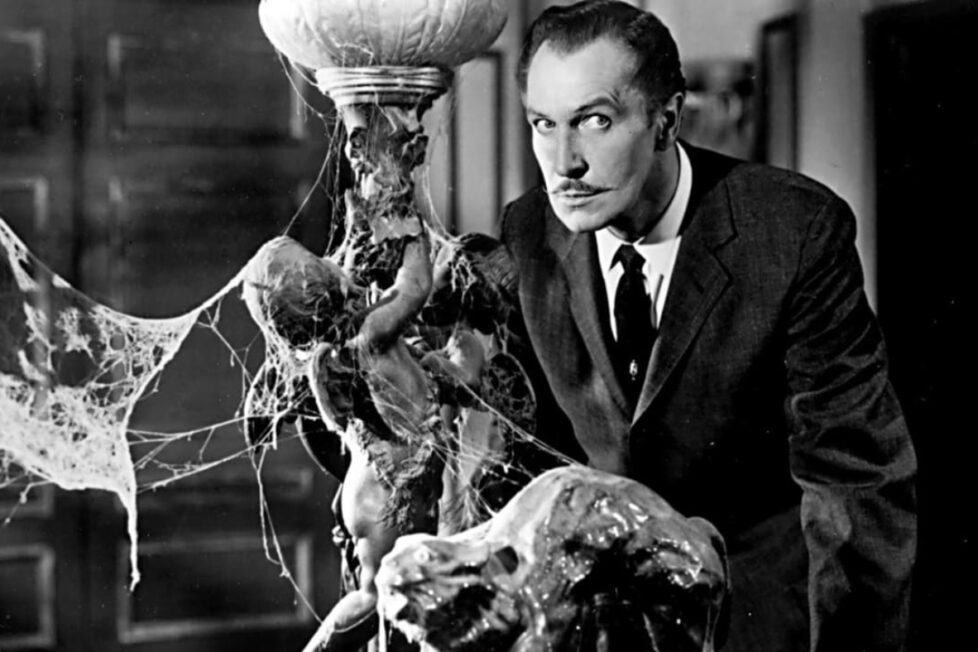
A millionaire offers $10,000 to five people who agree to be locked in a large, spooky, rented house overnight with him and his wife.


Piercing, ear-shattering screams and maniacal laughter break the silence. Heavy doors groan against their hinges, and the metallic clang of chains dragged across stone floors by wailing ghouls fills the air. Played over a pitch-black screen, these evocative sounds leave the audience to their darkest imaginings. Even after 65 years, the effect remains chillingly effective.
Up on an infamously haunted hill, there is a house that has supposedly claimed the lives of seven people: four men and three women. Frederick Loren (Vincent Price), a millionaire with questionable motives, invites five people to join him and his wife for a night in the spooky manor. If they stay, they are guaranteed $10,000—of course, their lives are at stake: it seems likely the house will kill again.
House on Haunted Hill doesn’t excel in any specific area; it doesn’t demand superlatives. However, it’s an entertaining and influential B-movie in a decade filled with them, making it a must-see for any serious horror film enthusiast. Beyond that, it transports you seamlessly back to an era of drive-in thrills and haunting records, serving as a conduit for the gothic horror that dominated mid-20th-century cinema. Much of the aesthetic pleasure derived from watching House on Haunted Hill lies in connecting the work to the litanies of stories, art, and paraphernalia it has partly inspired.
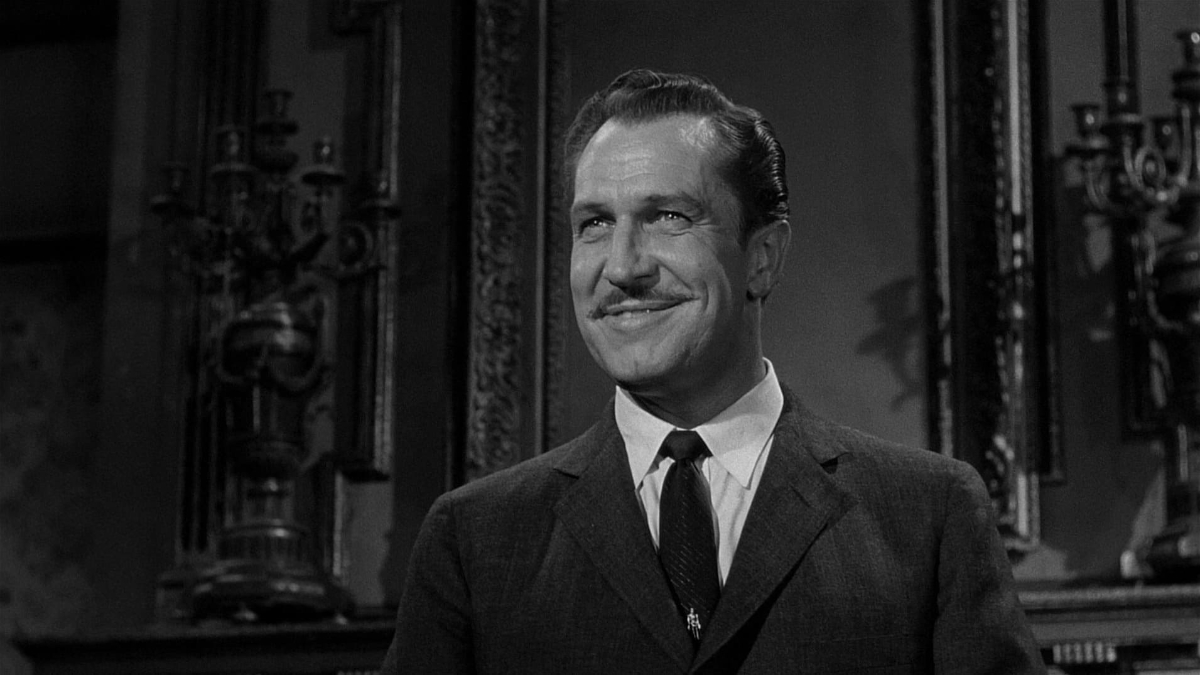
Firstly, the definition of a B-movie is crucial. Originally, these films accompanied higher-budget features, meaning their paltry budgets (and not the resulting inferior quality) were key to their success: only cheap production ensured profitability. Contemporary cinema, however, exhibits a peculiar B-movie glorification, albeit with an inverted formula. Films like The Meg (2018) exemplify a return to simplistic 1950s creature features, but seemingly aim to manufacture contrived awfulness, suggesting the filmmakers recognise the audience’s enjoyment of gleefully bad movies.
This embrace of artificial badness doesn’t come cheap: The Meg cost a staggering $130M to create, with its inevitable sequel clocking in at a similar price tag. Even James Gunn’s delightful homage to 1950s sci-fi B-movies, Slither (2006), showcases a similar reverence for anachronistic plots and their accompanying vintage aesthetic, despite carrying a comparatively modest $15M budget. The question of why some filmmakers remain so dedicated to idolizing this specific strain of film history is fascinating and warrants an article of its own. Needless to say, the B-movie, despite its humble beginnings, has undeniably left a sizeable mark on cinema.
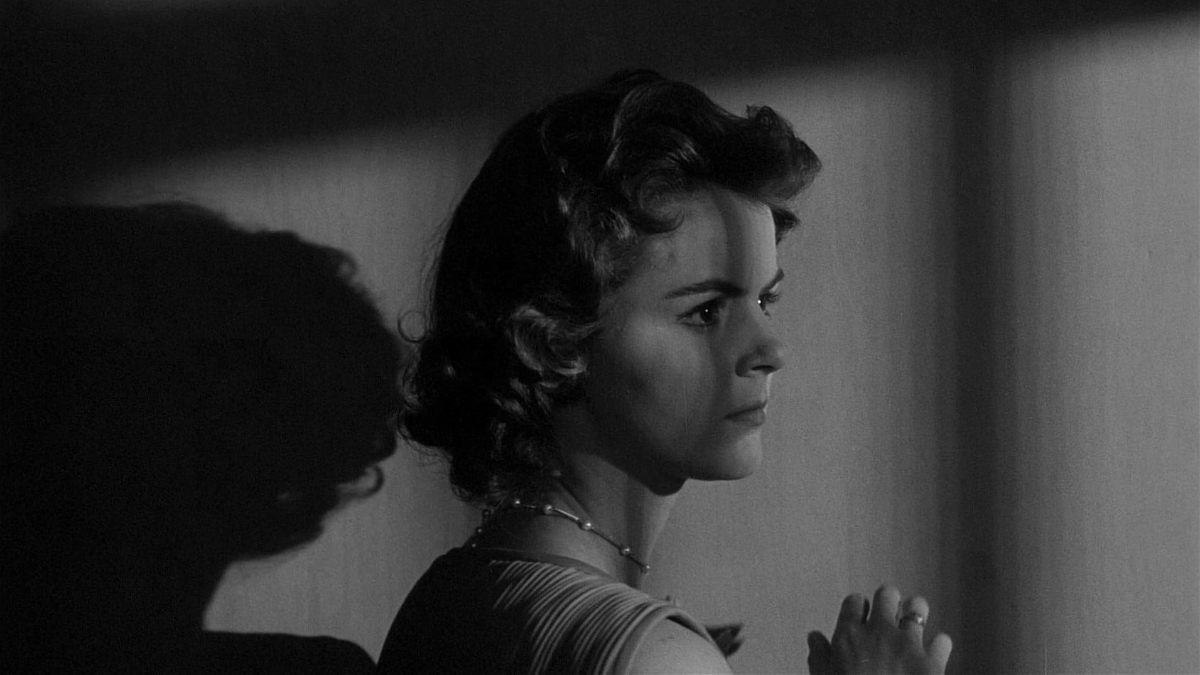
House on Haunted Hill, a B-movie produced for a mere $200,000 (roughly $2M today), exemplifies the pulp horror churned out by studios in the formative 1950s. It bears an uncanny resemblance to the then-popular Gothic literature of Edgar Allan Poe and H.P Lovecraft. Vincent Price, the undisputed star, prolifically adapted Poe’s work during this period alongside B-movie king Roger Corman. Their collaborations, including House of Usher (1960), The Pit and the Pendulum (1961), and The Masque of the Red Death (1964), solidified Price’s status as a pop-culture icon.
While William Castle produced and directed House on Haunted Hill, he didn’t quite reach the heights of Roger Corman’s Poe adaptations, though it must be said he doesn’t experience any nadirs either. While the introduction with screaming ghouls certainly establishes a chilling tone, it is very quickly squandered by Castle in the opening segment. As the characters enter the house, they stand around and acquaint themselves with each other, with little of importance being imparted to the audience. From there, Castle sets up the troubled marriage of Frederick and Annabelle Loren. This focus on marital strife further distracts from what should solely be a tale of spectres and phantoms, adding nothing in terms of frights. With a runtime of a mere 75 minutes, the real plot only unfolds after the half-hour mark.
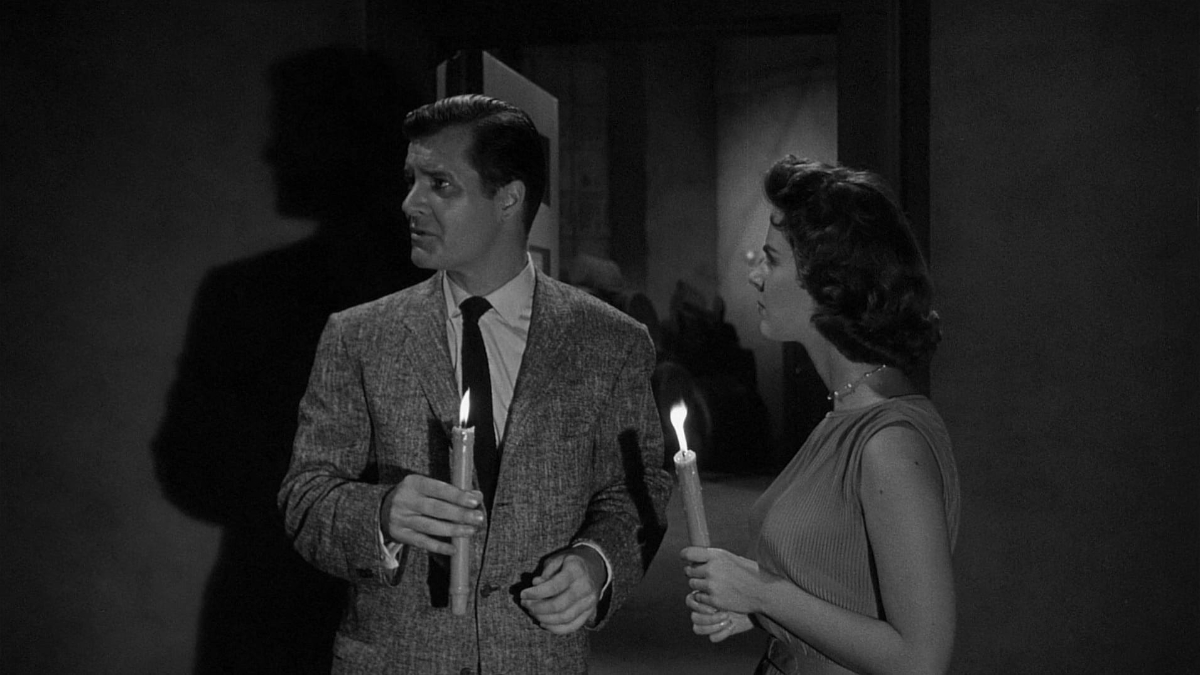
As a result, the film itself isn’t terrifying at all. Despite the chilling sounds at the opening (which, in cinemas, were so effective at scaring audiences that they sparked a trend of “haunting records” for Halloween and haunted houses), they arguably remain the spookiest part of the experience. While William Castle admirably avoids relying on cheap jump scares in House on Haunted Hill (though, one surprisingly effective one pops up), the film gradually meanders into a murder-mystery format. Collaborating with screenwriter Robb White, he crafts a plot that emphasises distrust and suspicion, while apprehension of supernatural phenomena gradually falls by the wayside.
In this way, the film gradually starts to resemble René Clair’s superb And Then There Were None (1945), the first adaptation of Agatha Christie’s novel. However, Castle lacks the same nerve-wracking narrative momentum or the intelligent and communicative cinematography. Both the camerawork and lighting in House on Haunted Hill appear relatively uninspired, especially when compared to similar films from the same period. For example, The Innocents (1961) utilises harrowing lighting to effectively convey malignant supernatural presences, while The Haunting (1963) boasts mesmerising cinematography that unsettles audiences deeply.
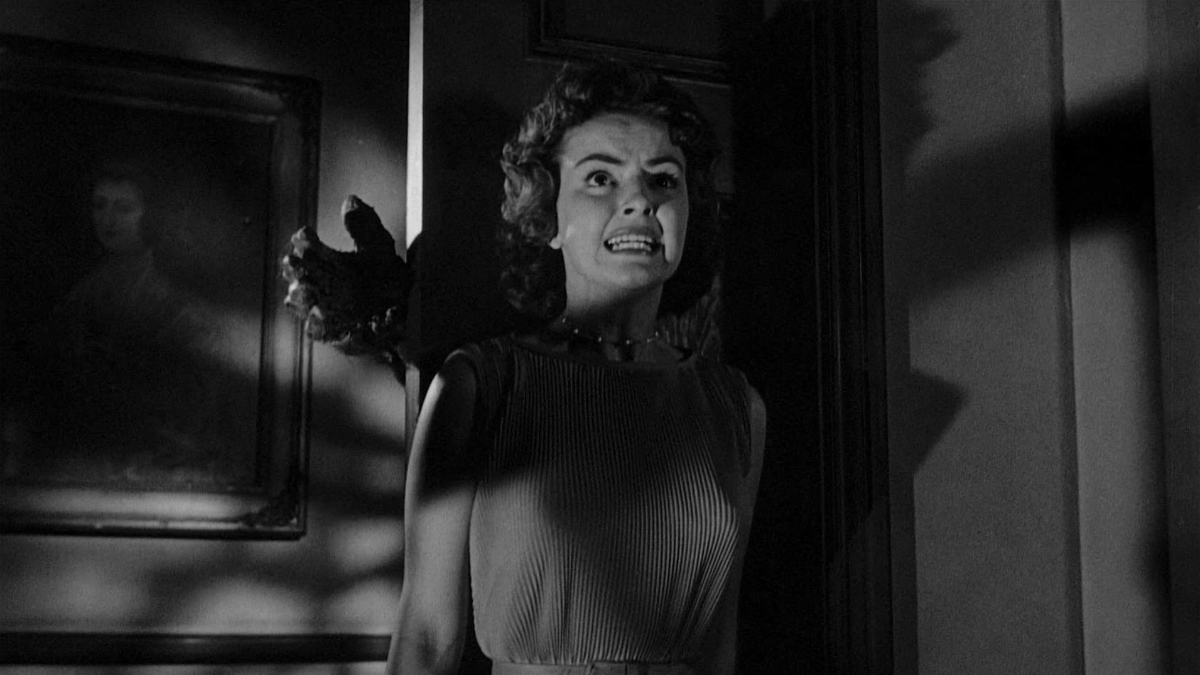
Unlike those timeless classics, House on Haunted Hill exhibits a delightfully campy reliance on props and set pieces. A chandelier swings unnervingly, blood oozes from the ceiling, and a piano frantically hammers away at its keys. A disembodied hand reaches across the room to brush a shoulder, and a rickety skeleton lurches towards a bubbling vat of acid. While none of it will truly terrify you (and whether or not these tricks genuinely startled audiences even 65 years ago is debatable), you might be surprised to learn how William Castle, the film’s producer, used these props in cinemas to heighten the viewing experience. His most notorious invention, “Emergo”, involved a plastic skeleton swooping down from an elaborate contraption above the audience, providing the necessary jolt of real-life terror that his film lacked. This unconventional promotional gimmick ensured the film’s success despite its shortcomings.
As I mentioned previously, while the film itself may not excel artistically, its influence can be observed in other haunted house movies. Notably, The Haunting features a highly similar plot, yet effectively develops characters and creates suspense. Interestingly, both House on Haunted Hill and The Haunting were given poorly received remakes in 1999. The mansion’s design, including its disturbing malfunctions, also seemingly influenced the haunted houses in films like The Amityville Horror (1979), The Shining (1980), and The Changeling (1980), suggesting that other filmmakers found at least some merit in the set design.
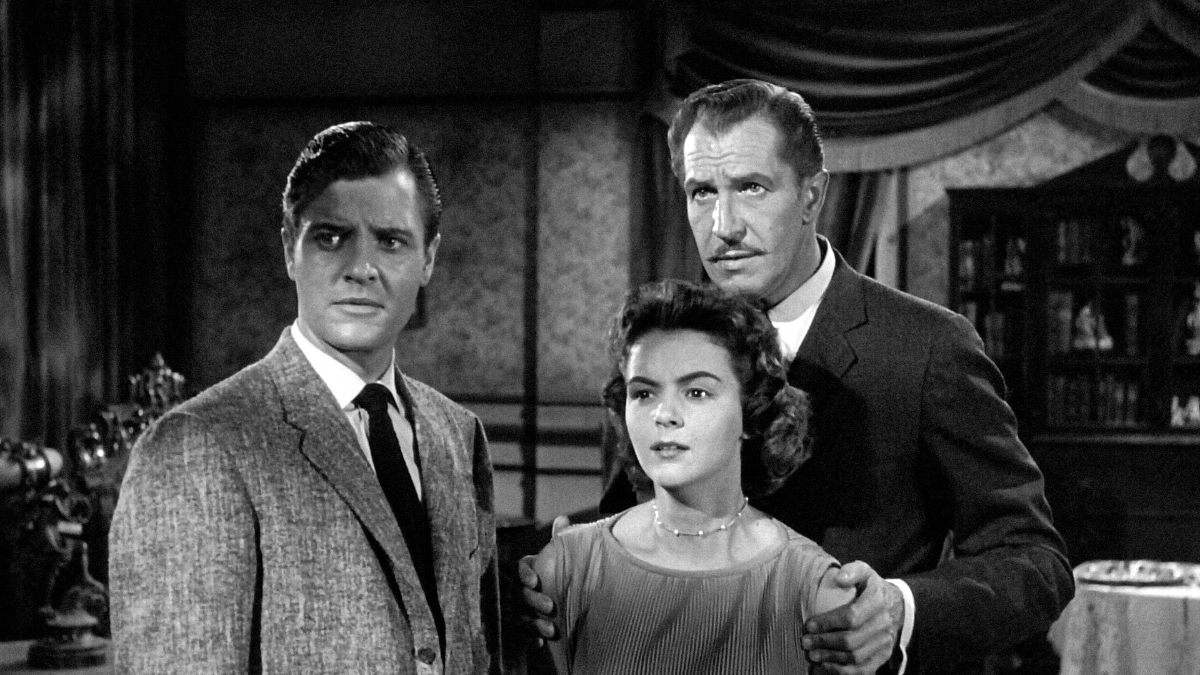
Tobe Hooper’s Poltergeist (1982) also reveals its clear influence from Castle’s film, leaning much more heavily into supernatural themes. Doctor Génessier’s mansion in Georges Franju’s groundbreaking Eyes Without a Face (1960) also possesses a similarly ominous atmosphere, despite being a distinct departure from Gothic horror. Instead, it offers a cold, clinical examination of insanity. Considering the unlikely possibility that Franju saw Castle’s film, any similarities likely stem from mere coincidence.
Perhaps most notably, the film’s success, though partially attributed to Castle’s gimmickry and showmanship, was reason enough for Alfred Hitchcock to venture into the low-budget horror genre himself. As a result, he made Psycho (1960), one of the best horror films ever made. The fact that this film, which largely relies on corny carnival tricks instead of story or character, went on to inspire such fantastic cinema is an achievement in its own right.
In summary, House on Haunted Hill doesn’t aspire to be a pinnacle of its genre, era, or even cinematic style. While it may no longer frighten audiences and lacks in-depth themes, symbolic elements, or well-developed characters, I still find it enjoyable nonetheless. The film is steeped in history, with sets and special effects that undeniably reflect the period in which it was made. In a way, it almost functions as a historical document, offering a glimpse into the experience of moviegoers during that era.
Despite its shortcomings, House on Haunted Hill excels in style, serving as a worthy throwback to watch for Halloween. All I have to do now is finish installing Emergo in my living room.
USA | 1959 | 75 MINUTES | 1.85:1 | BLACK & WHITE | ENGLISH

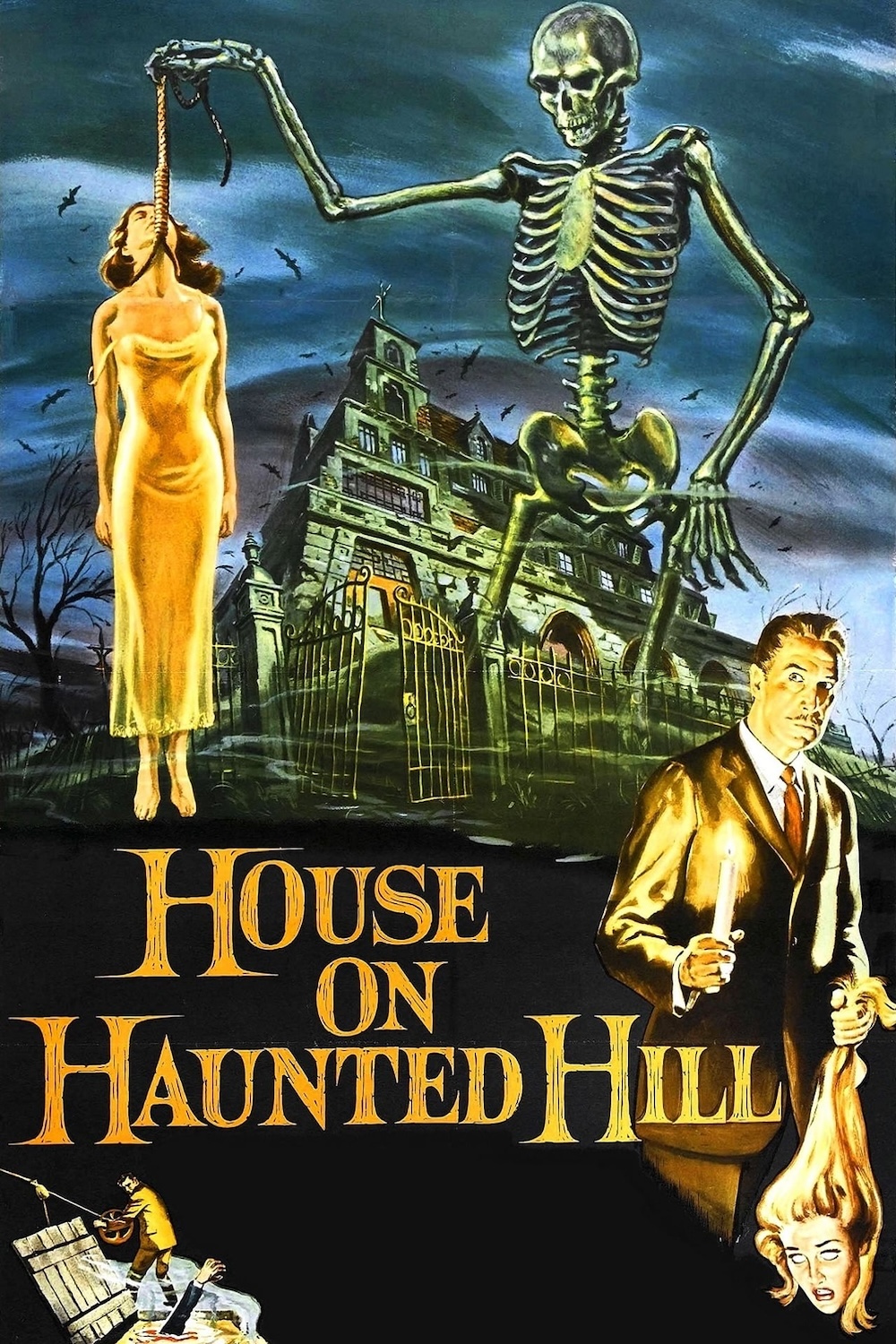
director: William Castle.
writer: Robb White.
starring: Vincent Price, Carol Ohmart, Richard Long, Alan Marshal, Carolyn Craig, Elisha Cook & Julie Mitchum.
